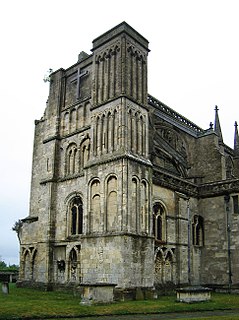Malmesbury
| Malmesbury | |
|---|---|
 Malmesbury Abbey |
|
| Malmesbury shown within Wiltshire | |
| Population | 5,380 (2011 census) |
| Demonym | Jackdaws (in informal contexts — blason populaire) |
| OS grid reference | ST940857 |
| Unitary authority | |
| Ceremonial county | |
| Region | |
| Country | England |
| Sovereign state | United Kingdom |
| Post town | Malmesbury |
| Postcode district | SN16 |
| Dialling code | 01666 |
| Police | Wiltshire |
| Fire | Dorset and Wiltshire |
| Ambulance | South Western |
| EU Parliament | South West England |
| UK Parliament | |
Malmesbury /ˈmɑːlmzbri/ or /ˈmɑːmzbri/ is a market town and civil parish in the southern Cotswolds in the county of Wiltshire, England. Technology company Dyson is headquartered in Malmesbury, which remains a market town and became prominent in the Middle Ages as a centre for learning focused on and around Malmesbury Abbey, the bulk of which forms a rare survival of the dissolution of the monasteries. Once the site of an Iron Age fort, in the Anglo-Saxon period it became the site of a monastery famed for its learning and one of Alfred the Great's fortified burhs for defence against the Vikings. Æthelstan, the first king of England, was buried in Malmesbury Abbey when he died in 939.
The hilltop contains several freshwater springs, which helped early settlements. It was the site of an Iron Age fort, and in the Anglo-Saxon period it had a monastery famed as a centre of learning. The town is listed in the Burghal Hidage as one of Alfred the Great's defended burhs assessed at 1200 hides, its Iron Age defences helping to provide protection against Viking attack. The town was described in the Domesday Book as a borough. Alfred's grandson, Æthelstan, the first king of England, was buried in Malmesbury Abbey in 939.
...
Wikipedia

